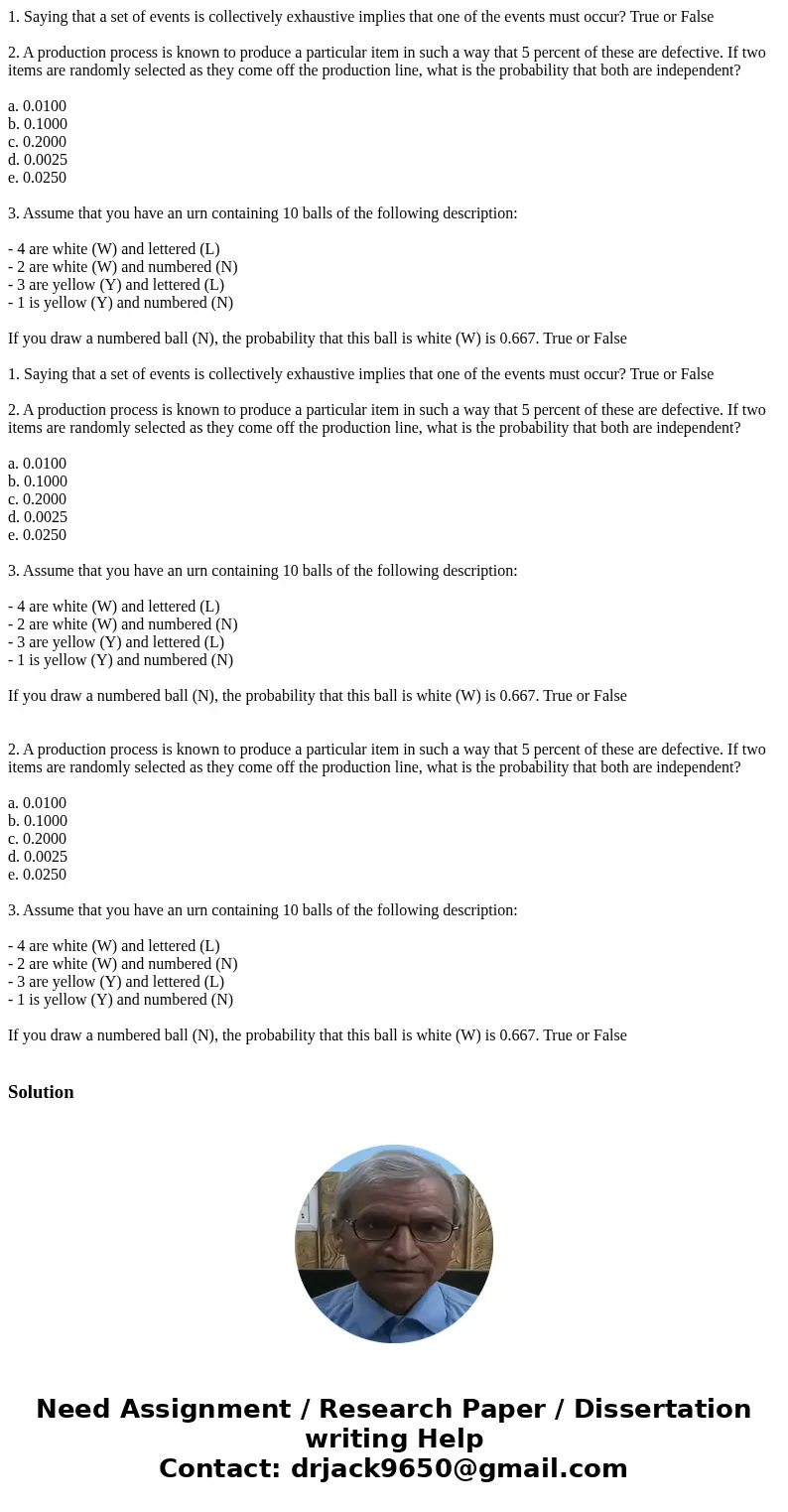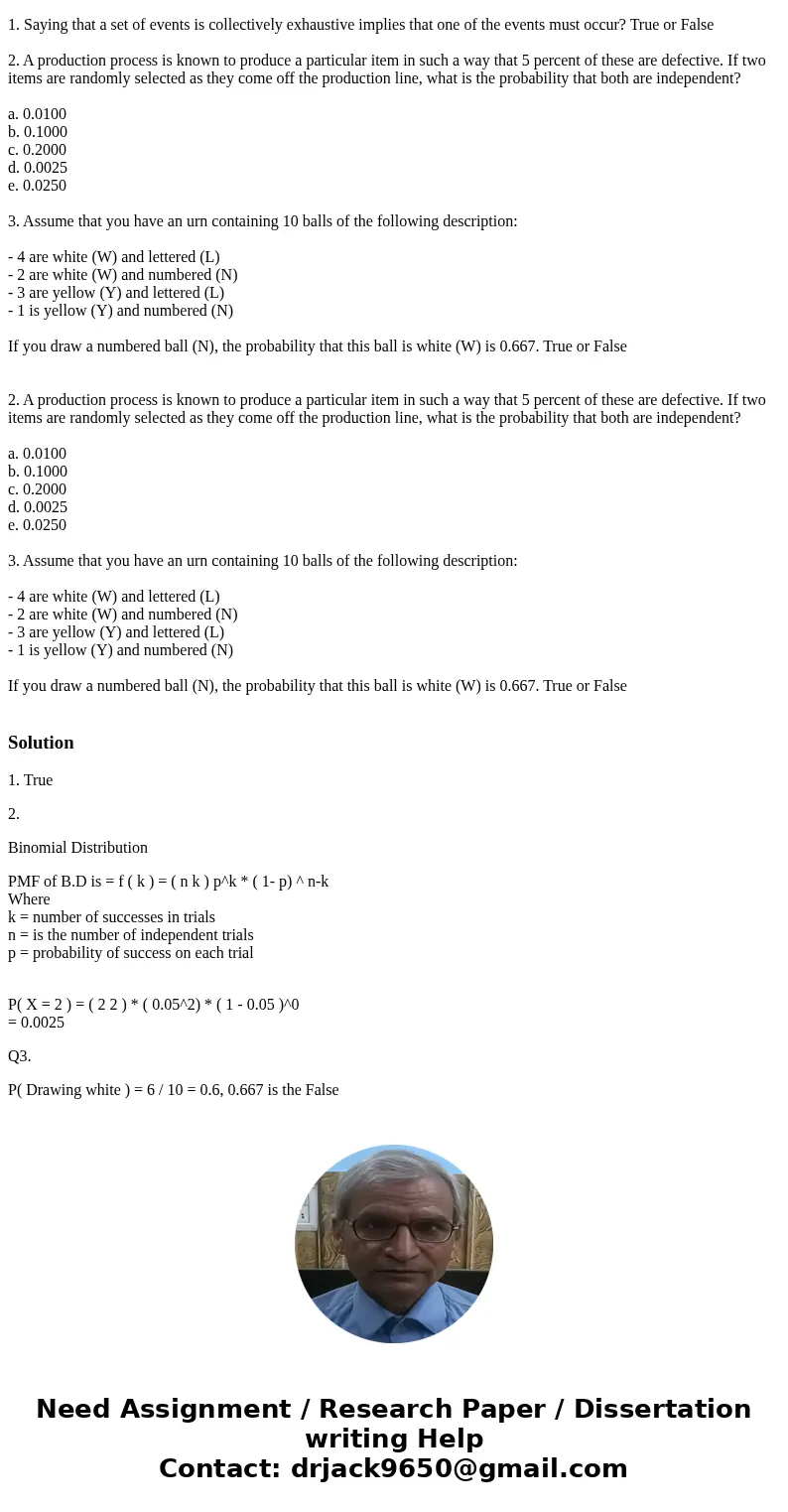1 Saying that a set of events is collectively exhaustive imp
1. Saying that a set of events is collectively exhaustive implies that one of the events must occur? True or False
2. A production process is known to produce a particular item in such a way that 5 percent of these are defective. If two items are randomly selected as they come off the production line, what is the probability that both are independent?
a. 0.0100
b. 0.1000
c. 0.2000
d. 0.0025
e. 0.0250
3. Assume that you have an urn containing 10 balls of the following description:
- 4 are white (W) and lettered (L)
- 2 are white (W) and numbered (N)
- 3 are yellow (Y) and lettered (L)
- 1 is yellow (Y) and numbered (N)
If you draw a numbered ball (N), the probability that this ball is white (W) is 0.667. True or False
1. Saying that a set of events is collectively exhaustive implies that one of the events must occur? True or False
2. A production process is known to produce a particular item in such a way that 5 percent of these are defective. If two items are randomly selected as they come off the production line, what is the probability that both are independent?
a. 0.0100
b. 0.1000
c. 0.2000
d. 0.0025
e. 0.0250
3. Assume that you have an urn containing 10 balls of the following description:
- 4 are white (W) and lettered (L)
- 2 are white (W) and numbered (N)
- 3 are yellow (Y) and lettered (L)
- 1 is yellow (Y) and numbered (N)
If you draw a numbered ball (N), the probability that this ball is white (W) is 0.667. True or False
2. A production process is known to produce a particular item in such a way that 5 percent of these are defective. If two items are randomly selected as they come off the production line, what is the probability that both are independent?
a. 0.0100
b. 0.1000
c. 0.2000
d. 0.0025
e. 0.0250
3. Assume that you have an urn containing 10 balls of the following description:
- 4 are white (W) and lettered (L)
- 2 are white (W) and numbered (N)
- 3 are yellow (Y) and lettered (L)
- 1 is yellow (Y) and numbered (N)
If you draw a numbered ball (N), the probability that this ball is white (W) is 0.667. True or False
Solution
1. True
2.
Binomial Distribution
PMF of B.D is = f ( k ) = ( n k ) p^k * ( 1- p) ^ n-k
Where
k = number of successes in trials
n = is the number of independent trials
p = probability of success on each trial
P( X = 2 ) = ( 2 2 ) * ( 0.05^2) * ( 1 - 0.05 )^0
= 0.0025
Q3.
P( Drawing white ) = 6 / 10 = 0.6, 0.667 is the False


 Homework Sourse
Homework Sourse